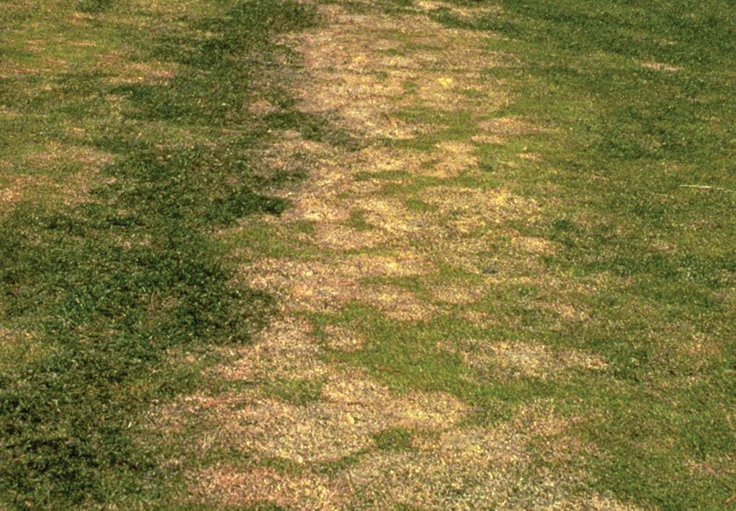
Healthy Turf Tips: Snow Mold – Sponsored by Bayer
Rob Golembiewski, Ph.D., is part of the Bayer Green Solutions Team
The Challenge
Pink and gray snow molds are devastating turf diseases that occur on golf course putting greens, tees, and fairways in the presence of snow cover. These diseases are not only unsightly, but can result in unplayable turf surfaces and delayed course openings in the spring. Both pink and gray snow molds can affect all cool-season turfgrasses, but they tend to be more problematic on annual bluegrass and bentgrasses.
A Quick Review
Pink snow mold, caused by Microdochium nivale, occurs in cold (32-50oF) wet weather with intermittent periods of snow cover (less than 80 days). Symptoms are visible at snow melt as tan patches 2-12” in diameter with a pink border. The affected areas change in color to a whitish gray with leaves taking on a bleached appearance. Individual patches may also coalesce, resulting in extensive damage to the turf.
Gray snow mold, caused by Typhula sp., is active at 32-40oF with extended snow cover (greater than 80 days). Symptoms appearing at snow melt are light-yellow-to-gray discolored areas ranging from 3-12” or more in diameter. Matted turf progresses quickly to a grayish-white color. As patches enlarge, a one-inch halo of grayish-white mycelial growth can appear at the surrounding margin. Individual patches may then coalesce to form large affected areas. The key diagnostic feature is the presence of small, round, hardened sclerotia (chestnut brown for Typhula incarnata and black for Typhula ishikariensis). Pink snow mold can be distinguished from gray snow mold by the absence of these characteristic sclerotia.
Management Strategies
Implementing proper cultural practices can assist in reducing disease severity. Management strategies include: avoiding late fall fertilization that leads to lush growth, controlling excessive thatch, removing tree leaves from the turf, managing drifting snow and removing snow/improving drainage to promote rapid drying in the early spring.
A pre-snow preventive application is critical for protecting vulnerable turf areas from snow mold. While disease symptoms develop under snow cover, sclerotia begin to germinate in the fall at 50-65oF. An additional application during this time period has been shown to reduce disease severity the following spring. After your last mowing of the season but prior to snow cover, a final fungicide application is needed. Products or mixtures containing 2-4 different active ingredients have been shown to provide exceptional snow mold control.
As with any snow mold fungicides, if treated areas are subject to abnormal weather, heavy rainfall and/or snowfall that melts prior to permanent snow cover, a repeat application may be necessary to provide adequate snow mold protection.
Bayer (reg’d) and the Bayer Cross (reg’d) are trademarks of Bayer.
Latest from Golf Course Industry
- The Cabot Collection announces move into course management
- Carolinas GCSA raises nearly $300,000 for research
- Advanced Turf Solutions’ Scott Lund expands role
- South Carolina’s Tidewater Golf Club completes renovation project
- SePRO to host webinar on plant growth regulators
- Turfco introduces riding applicator
- From the publisher’s pen: The golf guilt trip
- Bob Farren lands Carolinas GCSA highest honor






